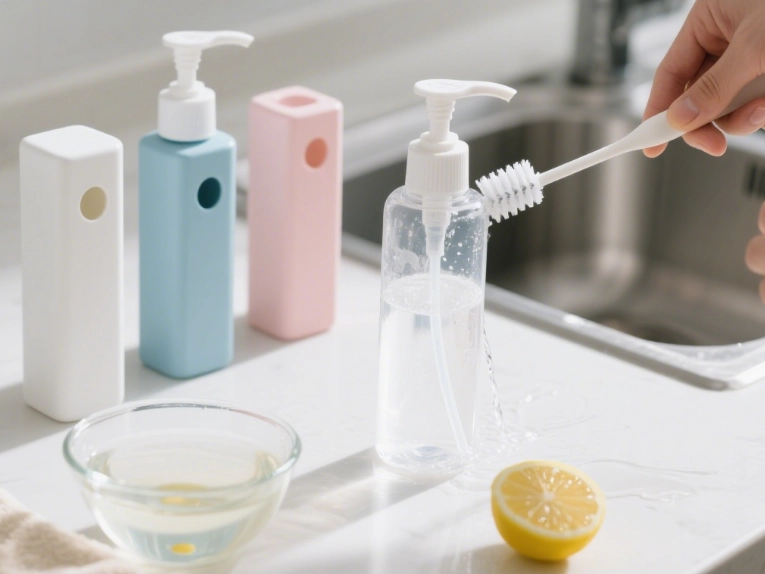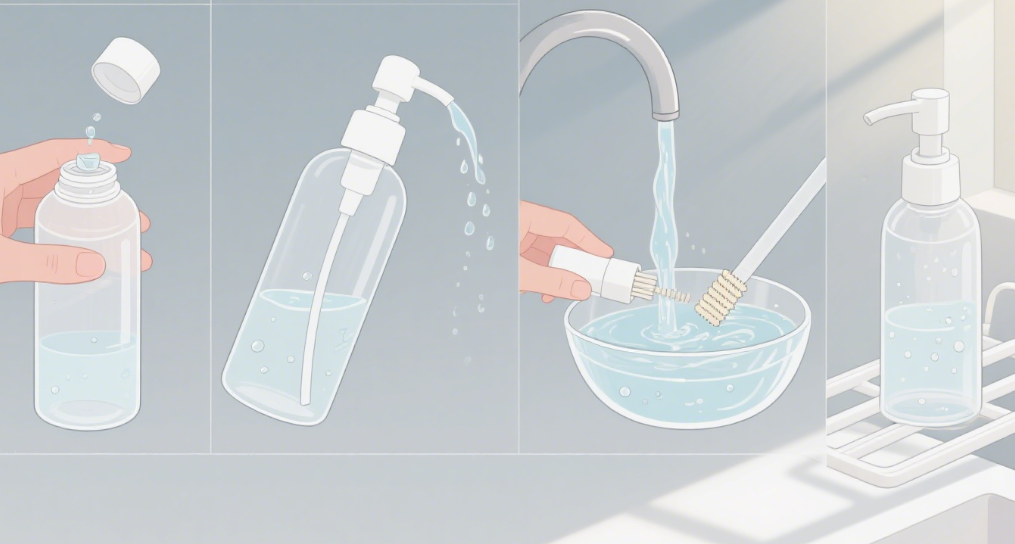Views: 28 Author: Site Editor Publish Time: 2025-08-29 Origin: Site












Spray bottles are indispensable in our daily lives, whether it’s the pocket sanitizer spray for on - the - go hygiene, the water sprayer for plant care, the travel perfume atomiser to keep us smelling great while traveling. These handy tools, including fragrance sample bottles, need proper cleaning after use to maintain their functionality and hygiene. This passage provides a comprehensive guide on how to clean them effectively.
First things first, assemble the necessary cleaning supplies. You’ll need mild dish soap, which is gentle enough not to damage the bottle materials while still being effective at cutting through grime. Warm water is essential for better cleaning action. A small brush is a must - have; a bottle brush with a long handle is perfect for reaching the bottom of the bottle, and a toothbrush can be used for scrubbing the nozzle and the neck area. For those stubborn residues that just won't budge, white vinegar is a great natural cleaner. It works wonders on oils, sticky perfume remnants, and other tough - to - remove substances. These supplies are suitable for all types of spray bottles.
Start by ensuring the spray bottle is completely empty. If there’s any leftover liquid—be it sanitizer, perfume, water, or any other content—pour it out carefully. For a pocket sanitizer spray, this might mean getting rid of the last traces of the sanitizing solution. Once emptied, give the bottle a thorough rinse with warm water. This initial rinse helps to flush out the bulk of the old content, making the subsequent cleaning steps more effective. Make sure to run water through the nozzle as well to start clearing any residue that might be clogging it.
Fill the bottle about a quarter full with warm water. Add a few drops of mild dish soap to the water. The amount of soap can be adjusted depending on the level of dirt; for a heavily soiled travel perfume atomiser that has old perfume residue, you might need a bit more soap. Put the nozzle back on the bottle (if it’s removable, you can clean it separately, but even if not, this step helps in distributing the soapy water). Give the bottle a gentle shake to ensure the soapy water reaches all areas inside. Then, take the small brush and start scrubbing the inside of the bottle. Pay extra attention to the neck of the bottle, where residue tends to accumulate, and the bottom, which can be a hiding place for dirt. For fragrance sample bottles, which often have sticky perfume remnants, this scrubbing step is crucial to get them clean and ready for future use.
If there’s stubborn residue that the soapy water can’t handle, it’s time to bring in the white vinegar. For example, in a reusable perfume pocket bottle, old perfume oil can leave a sticky and hard - to - remove residue. Add a small amount of white vinegar to the soapy water mixture in the bottle. The acidic nature of vinegar helps break down oils and stubborn smells. Let the vinegar - soapy water solution sit in the bottle for a few minutes, allowing it to work on the residue. After the waiting period, take the brush and scrub the bottle again. You’ll notice that the tough residue starts to come off more easily.
After scrubbing, it’s time to rinse the bottle thoroughly. Run warm water into the bottle and swish it around, making sure to reach all the nooks and crannies. Pour out the water and repeat this process several times. This is to ensure that all the soap (and vinegar, if used) is completely removed from the bottle. Don’t forget to rinse the nozzle as well. Hold the bottle under running water and press the spray trigger a few times to force water through the nozzle, clearing any remaining soap or residue that could cause clogs. A properly rinsed bottle is essential, especially for items like travel perfume atomisers, where any leftover soap could affect the fragrance when you use it next.
The final step is to let the bottle and nozzle air dry completely. You can place the bottle upside down on a clean towel or a drying rack. This allows any remaining water to drain out. It’s important not to put the bottle away while it’s still wet, as moisture can lead to mold growth, which is unhygienic, especially for a pocket sanitizer spray that’s used for hygiene purposes. Also, for items like travel perfume atomisers, any remaining water could mix with the next batch of fragrance and alter its scent. Letting them air dry thoroughly ensures that they are clean, dry, and ready for their next use.

Not all spray bottles are the same—glass and plastic require unique care to avoid damage:
Glass Spray Bottles (e.g., travel perfume atomisers, high-end fragrance sample bottles):
Pros: Resistant to stains, odors, and harsh cleaners (like vinegar).
Cleaning Notes: Avoid dropping—glass is fragile. If the bottle has a metal nozzle (common in travel perfume atomisers), dry the nozzle immediately after rinsing to prevent rust. Never use abrasive brushes (like wire brushes) on glass, as they scratch the surface.
Plastic Spray Bottles (e.g., pocket sanitizer sprays, water sprayers, reusable perfume pocket bottles):
Pros: Lightweight and shatterproof—great for travel or outdoor use.
Cleaning Notes: Never use boiling water (it warps plastic) or harsh chemicals (like bleach, which breaks down plastic). Avoid storing strong scents (e.g., heavy perfumes) in plastic long-term—perfume oils can seep into plastic pores and leave permanent odors. If a plastic bottle develops scratches, replace it—scratches harbor bacteria, making it unsafe for pocket sanitizer sprays or skincare mists.
By following these detailed steps, your spray bottles—Whether they are mini pocket spray bottle or a large capacity spray bottle—will be in top - notch condition. Regular cleaning not only keeps them working well but also ensures that whatever you put in them later stays pure and effective. So, don’t neglect this simple maintenance task and keep your spray bottles in perfect shape for all your needs.If you want to use the same spray bottle for a long time, it is also important to choose high-quality spray bottle products when purchasing. It can help you extend the service life and give you a better experience. If you want to learn more about spray bottle products, please browse our website:https://www.packsubir.com.Please contact us by samuel@subircosmetics.com or 0086-574-88390029 if you have any questions.